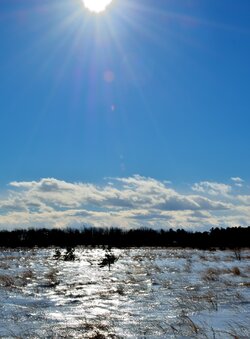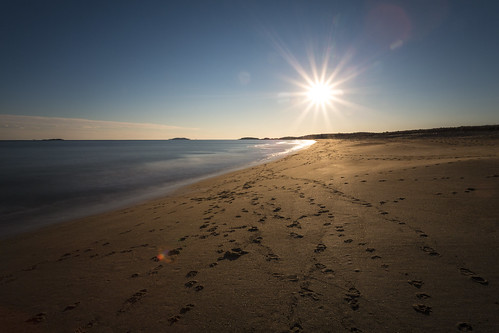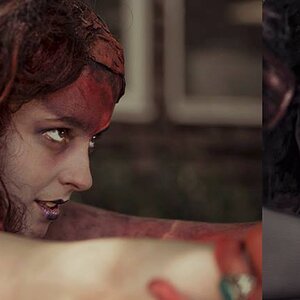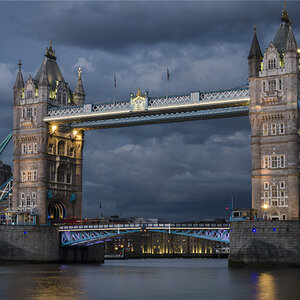Navigation
Install the app
How to install the app on iOS
Follow along with the video below to see how to install our site as a web app on your home screen.

Note: This feature currently requires accessing the site using the built-in Safari browser.
More options
You are using an out of date browser. It may not display this or other websites correctly.
You should upgrade or use an alternative browser.
You should upgrade or use an alternative browser.
Can you take pictures of the sun?
- Thread starter snapsnap1973
- Start date
wfooshee
No longer a newbie, moving up!
- Joined
- Oct 28, 2014
- Messages
- 846
- Reaction score
- 268
- Can others edit my Photos
- Photos OK to edit
That's the same eclipse I was shooting, this past October 23rd. A group of us were on a beach here in the Florida panhandle. We were so excited to see the eclipse start, but as the sun set there were clouds on the horizon, so the fun stuff disappeared behind the clouds just four or five minutes after the image I just posted above.
Like I said, no filters, but I didn't have my eye at the viewfinder, just stole a peek from as far back as I could be and still hold the camera, which was not mounted. Did not want to leave it aimed at the sun and maybe burn up the metering system.
Like I said, no filters, but I didn't have my eye at the viewfinder, just stole a peek from as far back as I could be and still hold the camera, which was not mounted. Did not want to leave it aimed at the sun and maybe burn up the metering system.
BananaRepublic
No longer a newbie, moving up!
- Joined
- Jul 10, 2014
- Messages
- 1,319
- Reaction score
- 161
- Location
- Eire
- Can others edit my Photos
- Photos OK to edit
Looking directly at the sun with your naked eye is a bad idea even with sunglasses, unless the sunglasses double as a welding mask, and whatever you do don't zoom in on the sun whilst looking through the viewfinder.
The best Gunfighters always kept there back to the sun for a reason!
The best Gunfighters always kept there back to the sun for a reason!
TCampbell
Been spending a lot of time on here!
- Joined
- Mar 31, 2012
- Messages
- 3,614
- Reaction score
- 1,556
- Location
- Dearborn, MI
- Can others edit my Photos
- Photos OK to edit
Looking directly at the sun with your naked eye is a bad idea even with sunglasses, unless the sunglasses double as a welding mask, and whatever you do don't zoom in on the sun whilst looking through the viewfinder.
The best Gunfighters always kept there back to the sun for a reason!
There's a NASA article I wanted to link, but I can't find it. In any case, they had an astronomer who is also an ophthalmologist explaining the safety issues. In the article and video, I think he says that #14 welding glass is "safe" but most others are NOT safe. The spectrum being blocked by many types of welding glass is specific to the types of harmful light emitted by the types of welding. The sun emits nearly as much harmful energy in the IR, which we cannot see. It's critically important that the filter ALSO block the harmful IR energy. Don't use just any welding glass.
We jokingly warn people "Do NOT stare DIRECTLY at the Sun with REMAINING working eyeball!" In other words, unless you absolutely know the filter you are using is safe for solar observing (e.g. it was designed for solar observing or you've done research to make sure it is safe for solar observing) then don't use it!
petrochemist
TPF junkie!
- Joined
- Mar 9, 2014
- Messages
- 1,873
- Reaction score
- 608
- Can others edit my Photos
- Photos OK to edit
As welding glass is designed to block UV & IR to at least the same extent as the visible it's safe to use, but you should use high factor welding glass if you've got any magnification.I've heard people say they used a welders mask to shoot through to take sun pictures. Never tried it myself.
I used shade 13 welding glass to photograph the lunch time sun here in the UK with a 200mm telephoto. Sharpness & contrast wasn't ideal but with a little playing on the computer the sunspots could be made out & match those shown on NASA's SOHO website.

pgriz
Been spending a lot of time on here!
- Joined
- Jul 30, 2010
- Messages
- 6,734
- Reaction score
- 3,221
- Location
- Canada
- Can others edit my Photos
- Photos OK to edit
I've been interested in the solar spectrum profile since it impacts some of the work I do. There are many sources accessible on the internet that show the solar spectrum as a distribution of energy by wavelength. One such graphic is File:Solar Spectrum.png - Wikipedia, the free encyclopedia
In summary, about 53% of the energy of the light from the sun is in the infrared portion of the spectrum, with ultraviolet making up 3% and visible light making up the rest (44%).
We all know how a little optical aid (magnifying glass) can concentrate enough sunlight to cause burns (wood, paper, etc.). The same effect will happen in the eyeball. Fortunately, when the sun is close to the horizon, almost all the UV is filtered out by the atmosphere, which is why we can usually admire the sunset without going blind. Even then, when I shoot the sun, I use the camera's live-view function to avoid any possibility of seeing sunlight concentrated by the optics.
In summary, about 53% of the energy of the light from the sun is in the infrared portion of the spectrum, with ultraviolet making up 3% and visible light making up the rest (44%).
We all know how a little optical aid (magnifying glass) can concentrate enough sunlight to cause burns (wood, paper, etc.). The same effect will happen in the eyeball. Fortunately, when the sun is close to the horizon, almost all the UV is filtered out by the atmosphere, which is why we can usually admire the sunset without going blind. Even then, when I shoot the sun, I use the camera's live-view function to avoid any possibility of seeing sunlight concentrated by the optics.
PropilotBW
Been spending a lot of time on here!
- Joined
- Feb 7, 2013
- Messages
- 2,009
- Reaction score
- 675
- Location
- Atlanta, GA, USA
- Can others edit my Photos
- Photos OK to edit
I guarantee everybody that owns a camera has taken a sunset photo
BananaRepublic
No longer a newbie, moving up!
- Joined
- Jul 10, 2014
- Messages
- 1,319
- Reaction score
- 161
- Location
- Eire
- Can others edit my Photos
- Photos OK to edit
I've been interested in the solar spectrum profile since it impacts some of the work I do. There are many sources accessible on the internet that show the solar spectrum as a distribution of energy by wavelength. One such graphic is File:Solar Spectrum.png - Wikipedia, the free encyclopedia
In summary, about 53% of the energy of the light from the sun is in the infrared portion of the spectrum, with ultraviolet making up 3% and visible light making up the rest (44%).
We all know how a little optical aid (magnifying glass) can concentrate enough sunlight to cause burns (wood, paper, etc.). The same effect will happen in the eyeball. Fortunately, when the sun is close to the horizon, almost all the UV is filtered out by the atmosphere, which is why we can usually admire the sunset without going blind. Even then, when I shoot the sun, I use the camera's live-view function to avoid any possibility of seeing sunlight concentrated by the optics.
I've been interested in the solar spectrum profile since it impacts some of the work I do. There are many sources accessible on the internet that show the solar spectrum as a distribution of energy by wavelength. One such graphic is File:Solar Spectrum.png - Wikipedia, the free encyclopedia
In summary, about 53% of the energy of the light from the sun is in the infrared portion of the spectrum, with ultraviolet making up 3% and visible light making up the rest (44%).
We all know how a little optical aid (magnifying glass) can concentrate enough sunlight to cause burns (wood, paper, etc.). The same effect will happen in the eyeball. Fortunately, when the sun is close to the horizon, almost all the UV is filtered out by the atmosphere, which is why we can usually admire the sunset without going blind. Even then, when I shoot the sun, I use the camera's live-view function to avoid any possibility of seeing sunlight concentrated by the optics.
In fact the reason the sky is blue is during the day down to the atmosphere.
another interesting fact: Or eyes capture light, from the sun, moon, light bulbs etc or brains then process the image and we see what we see. Effectively we see objects because light from the Sun/etal, hits objects and or eyes capture that light "reflection", sort off. Anyway light from the Sun takes a certain amount of time to reach earth, say 8 minutes, and in turn light from an object takes a certain time to reach or eyes, fraction of a second, So we are actually seeing things in the past.
Solarflare
No longer a newbie, moving up!
- Joined
- May 24, 2012
- Messages
- 2,898
- Reaction score
- 395
Woa !
I've never seen anyone use "miles" for astronomical distances before.
I'd rather just say the sun is 1 astronomical unit, or about 8.5 lightminutes away.
I've never seen anyone use "miles" for astronomical distances before.
I'd rather just say the sun is 1 astronomical unit, or about 8.5 lightminutes away.
Similar threads
- Replies
- 15
- Views
- 1K
- Replies
- 5
- Views
- 135


 beach1
beach1


![[No title]](/data/xfmg/thumbnail/33/33362-84aacb865117bf8cba89104b89e9b36c.jpg?1619735927)



![[No title]](/data/xfmg/thumbnail/33/33359-a5cf76b8e843e82b3831650af6dfa6b3.jpg?1619735923)



